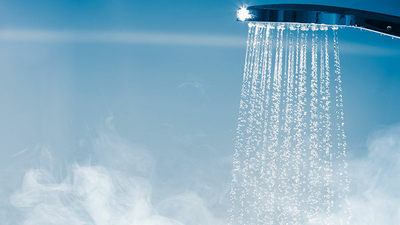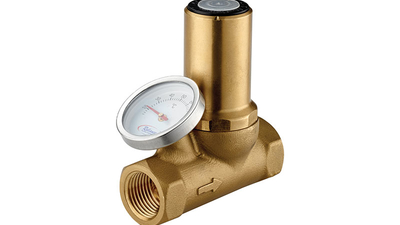How to create an efficient hot water system

Efficient hot water systems play a critical role in ensuring the successful management of all buildings. As well as delivering consistent hot water which underpins comfort and safety, a well-designed hot water system will also contribute to the efficient performance of a building. This makes the design, installation and operation of these hot water systems vitally important – particularly in commercial and healthcare environments where demand is at its highest and variations in water pressure are prevalent.
Directly impacting the performance of hot water systems, these challenges can be overcome with good planning and installation. Components such as Thermal Balancing Valves (TBVs) can be installed to regulate the flow of water, improving system performance and safety alongside sustainability by reducing water wastage.

What issues does an unbalanced system present?
An unbalanced system, triggered by fluctuating temperatures, can cause a number of problems to the overall safety and efficiency of a building’s hot water system. Hot and cold spikes in water have the potential to increase the risk of scalding at the point of use and even contribute to the growth of harmful bacteria such as Legionella. Besides this, an unbalanced system is simply inefficient, with users unnecessarily wasting water as they wait for it to reach the desired temperature. As well as placing additional strain on the boiler, more water will be wasted as a result.
By fitting TBVs at every hot water draw-off area and on the returning legs of pipework, these challenges can be overcome through a balanced and, therefore, far more efficient hot water system.
How does a Thermal Balancing Valve work?
Thermal Balancing Valves are specifically designed for creating efficient hot water systems. The valves make use of a thermostatic element that automatically balances the circulatory hot water network at a set point temperature of 70°C. The valve then adjusts the flow rate of hot water entering into the system to ensure that this balanced, set point temperature, is maintained. Any water hotter than 70°C is forced to other parts of the system that are operating at lower temperatures, further balancing the system overall.
By keeping the temperature of the water at a balanced 70°C and eliminating spikes in water temperature at the point of use, the potential for scalding can be reduced. Additionally, eliminating these hot spikes cuts down on the maintenance required for the system, as it prevents corrosion from forming on other components within the hot water system. By balancing the system at 70°C, we equally cut down on any cold spikes in the system, reducing the potential for harmful bacteria such as Legionella to grow within the system.
Furthermore, a properly balanced system can help save on both water and energy. A properly balanced system means that the days of cranking up the boiler so that hot water can reach the furthest away outlets are gone. This in turn reduces water wastage and cuts down on the energy needed to heat the water, all while improving user experience.

But what about water pressure?
By installing TBVs at the necessary places we can solve the problem of fluctuating water temperatures. However, commercial buildings also experience harsh fluctuations in water pressure, too.
For this reason, installing and staging Pressure Reducing Valves (PRVs) is a standard practice for fitting efficient hot water systems in commercial buildings. However, as we all know the more connections that are required to fit a system, the higher the chances of leaks occurring due to the higher potential for error.
Reliance Valves’ Combination Thermal Balancing and Pressure Reducing Valve combines two functions into a compact single-piece unit, effectively managing pressure while reducing the potential for leaks. The unit is designed to reduce system design complexity, all whilst saving on installation time and costs.
Just like a standard TBV, the combination valve balances the system by regulating the flow of hot water depending on the temperature. The valve is designed for use in hot water applications and incorporates a built-in disinfection function to help protect against Legionella. This in turn reduces the water pressure in the system, reducing it from a much higher intake pressure to a lower output, which further extends the life cycle of other valves such as TMVs, which can have their seals damaged if they take in high water pressures for extended periods of time.
The valve also includes a 'Lift & Turn' tamperproof temperature adjuster cap (from 45°C to 65°C) and a dry fit thermometer, which means that the system does not need to be drained upon their installation, further saving water.
By installing TBVs in commercial hot water applications, we can ensure hot water systems are capable of delivering reliably and consistently for users, alongside enhancing sustainability and efficiency across the system. RWC is on hand to provide technical support and best practice advice to simplify Thermal Balancing Valve installations.
Thermal Balancing Valves
Safely and reliably balances a secondary hot water supply in commercial applications
